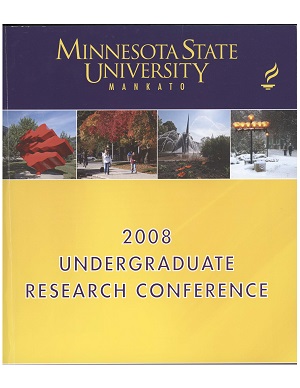Considering Democracy "An 'Unrealistic' Alternative": The Results of The 1954 American Intervention In Guatemala
Location
CSU 253/254
Start Date
22-4-2008 8:30 AM
End Date
22-4-2008 10:30 AM
Student's Major
Psychology
Student's College
Social and Behavioral Sciences
Mentor's Name
Matthew Loayza
Mentor's Department
History
Mentor's College
Social and Behavioral Sciences
Description
Guatemalan political elites have traditionally resorted to violence and repression in order to suppress social reform movements. In 1944, a group of middle-class reformers, including army captain Jacobo Arbenz, spearheaded a revolution that replaced dictator Jorge Ubico and began instituting genuine democratic reforms. The new civilian president, Juan Arevalo, sponsored new economic and political reforms intended to benefit the rural poor that constituted two-thirds of the Guatemalan population. Six years later, the revolution continued with the election of Arbenz, who promised to continue the efforts of his predecessor. However, U.S. officials, viewing developments in Guatemala through a Cold War prism, came to see Arbenz as a communist subjugating Guatemala and turning it into a Soviet proxy state. In 1954, President Dwight D. Eisenhower and his advisors responded by approving and implementing a Central Intelligence Agency plan to overthrow Arbenz and replace him with a counter-revolutionary leader, Colonel Carlos Castillo Armas. This paper examines the results of the 1954 American intervention, why it ultimately failed and why historians have come to view it as a mistake. It is based on relevant secondary literature and original U.S. government sources, including Department of State and Central Intelligence Agency telegrams, correspondence and National Intelligence Estimates.
Considering Democracy "An 'Unrealistic' Alternative": The Results of The 1954 American Intervention In Guatemala
CSU 253/254
Guatemalan political elites have traditionally resorted to violence and repression in order to suppress social reform movements. In 1944, a group of middle-class reformers, including army captain Jacobo Arbenz, spearheaded a revolution that replaced dictator Jorge Ubico and began instituting genuine democratic reforms. The new civilian president, Juan Arevalo, sponsored new economic and political reforms intended to benefit the rural poor that constituted two-thirds of the Guatemalan population. Six years later, the revolution continued with the election of Arbenz, who promised to continue the efforts of his predecessor. However, U.S. officials, viewing developments in Guatemala through a Cold War prism, came to see Arbenz as a communist subjugating Guatemala and turning it into a Soviet proxy state. In 1954, President Dwight D. Eisenhower and his advisors responded by approving and implementing a Central Intelligence Agency plan to overthrow Arbenz and replace him with a counter-revolutionary leader, Colonel Carlos Castillo Armas. This paper examines the results of the 1954 American intervention, why it ultimately failed and why historians have come to view it as a mistake. It is based on relevant secondary literature and original U.S. government sources, including Department of State and Central Intelligence Agency telegrams, correspondence and National Intelligence Estimates.
Recommended Citation
Viskocil, Mark. "Considering Democracy "An 'Unrealistic' Alternative": The Results of The 1954 American Intervention In Guatemala." Undergraduate Research Symposium, Mankato, MN, April 22, 2008.
https://cornerstone.lib.mnsu.edu/urs/2008/oral-session-11/5



